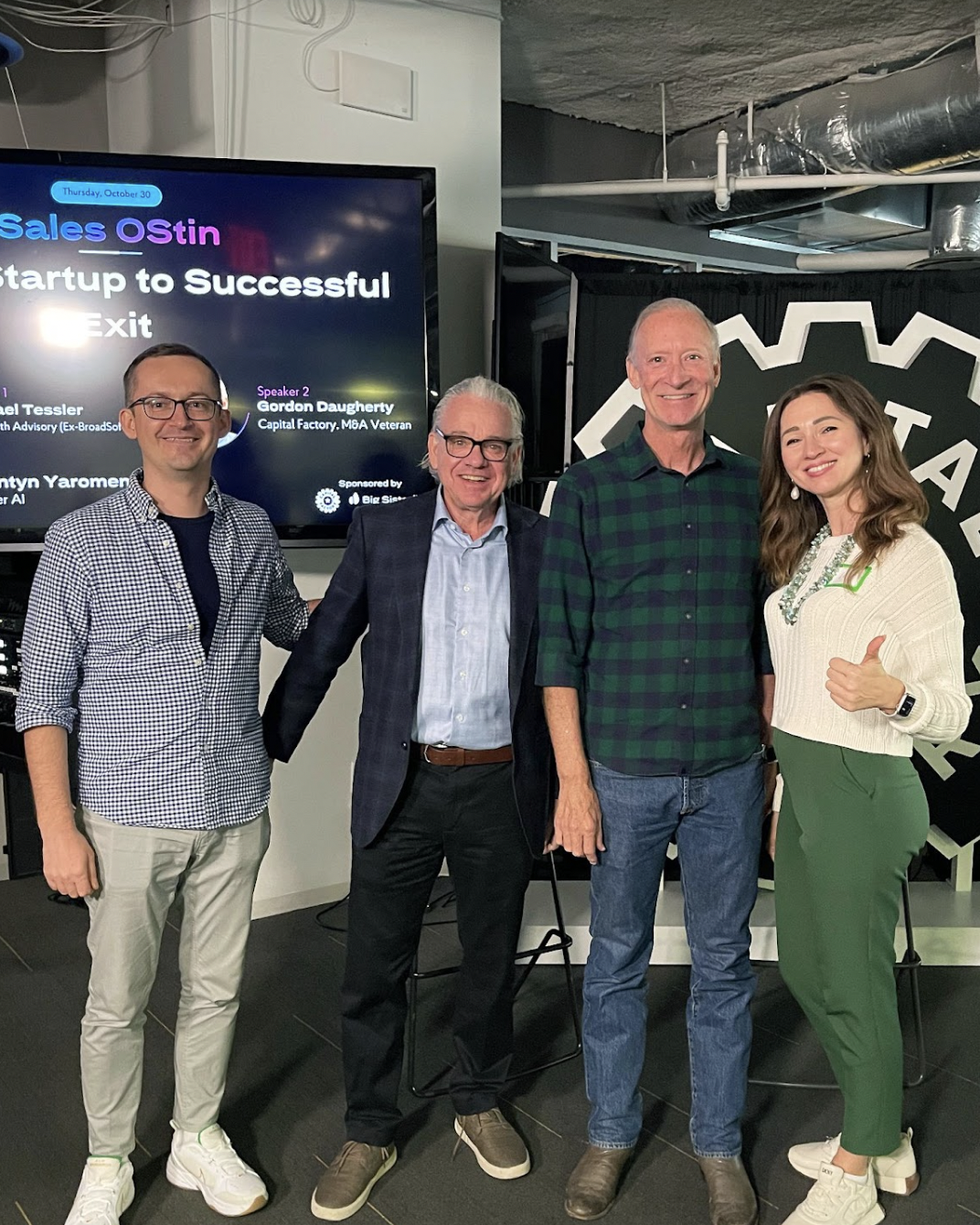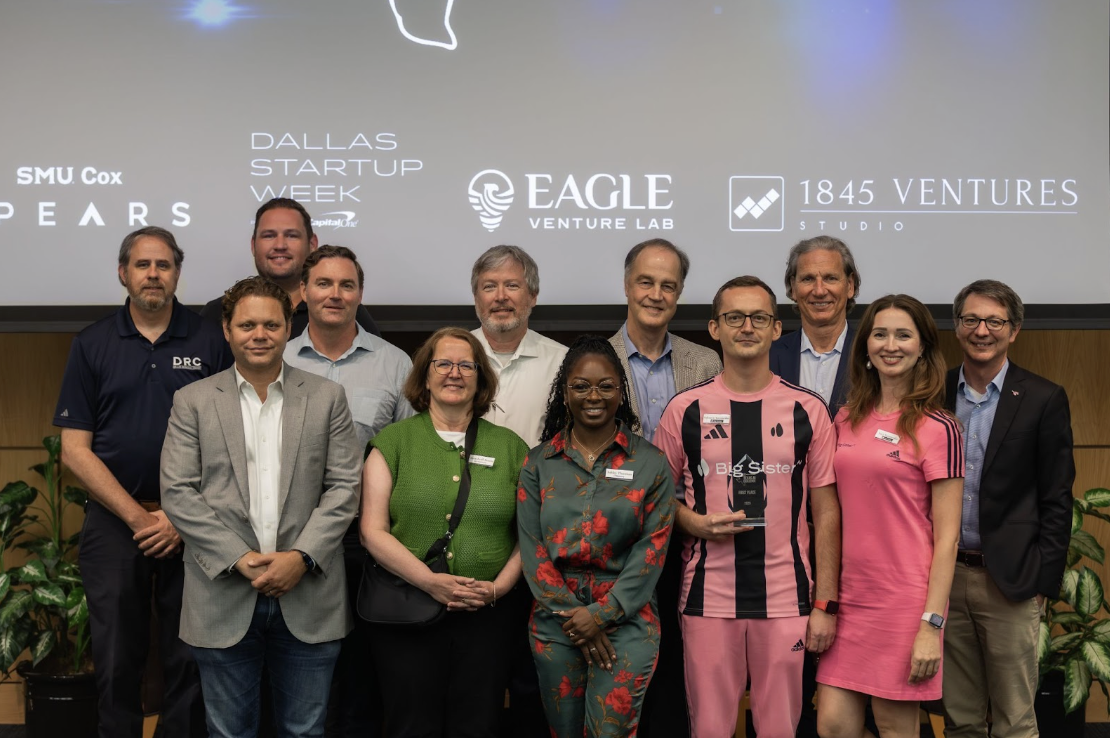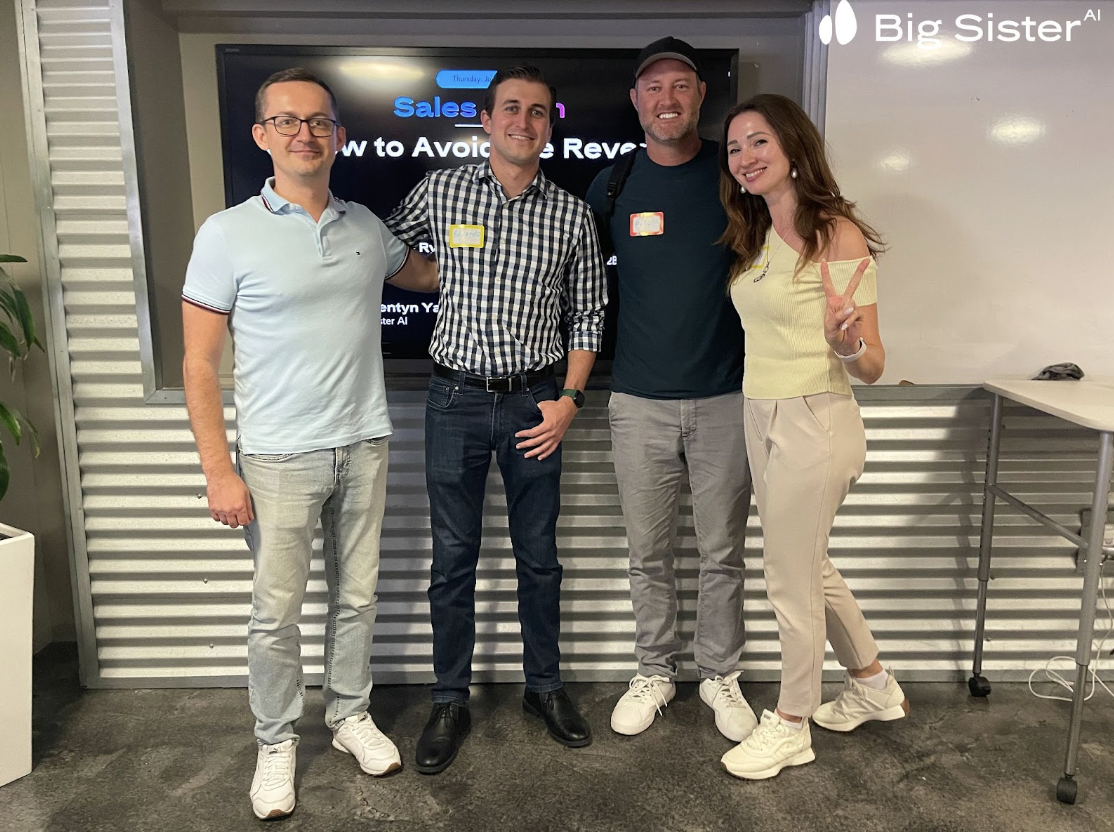From Early-Stage to Scale: Data-Driven Sales Strategies from Sales OStin
The Sales OStin event in Austin, expertly organized by Lucy Yaromenko and Valentyn Yaromenko, owners of Big Sister AI, brought together top sales minds to ignite a vibrant sales community. As Valentyn Yaromenko noted at the opening, “Everyone talks about data, everyone talks about AI, but before the AI, you need to have data if you want to have some important insights for you.” This set the tone for a day focused on mastering foundational data and clear strategies to drive growth in early-stage and scaling businesses.
The event featured insightful leaders who generously shared their expertise and experiences. Featured speakers included Chris Palmisano, VCOO & Fractional C-Suite Executive, who brings a wealth of operational and executive leadership experience across multiple industries, and Tiffany Gonzalez, Fractional GTM Executive & Limited Partner at Stage 2 Capital, who specializes in go-to-market strategies and scaling growth initiatives.
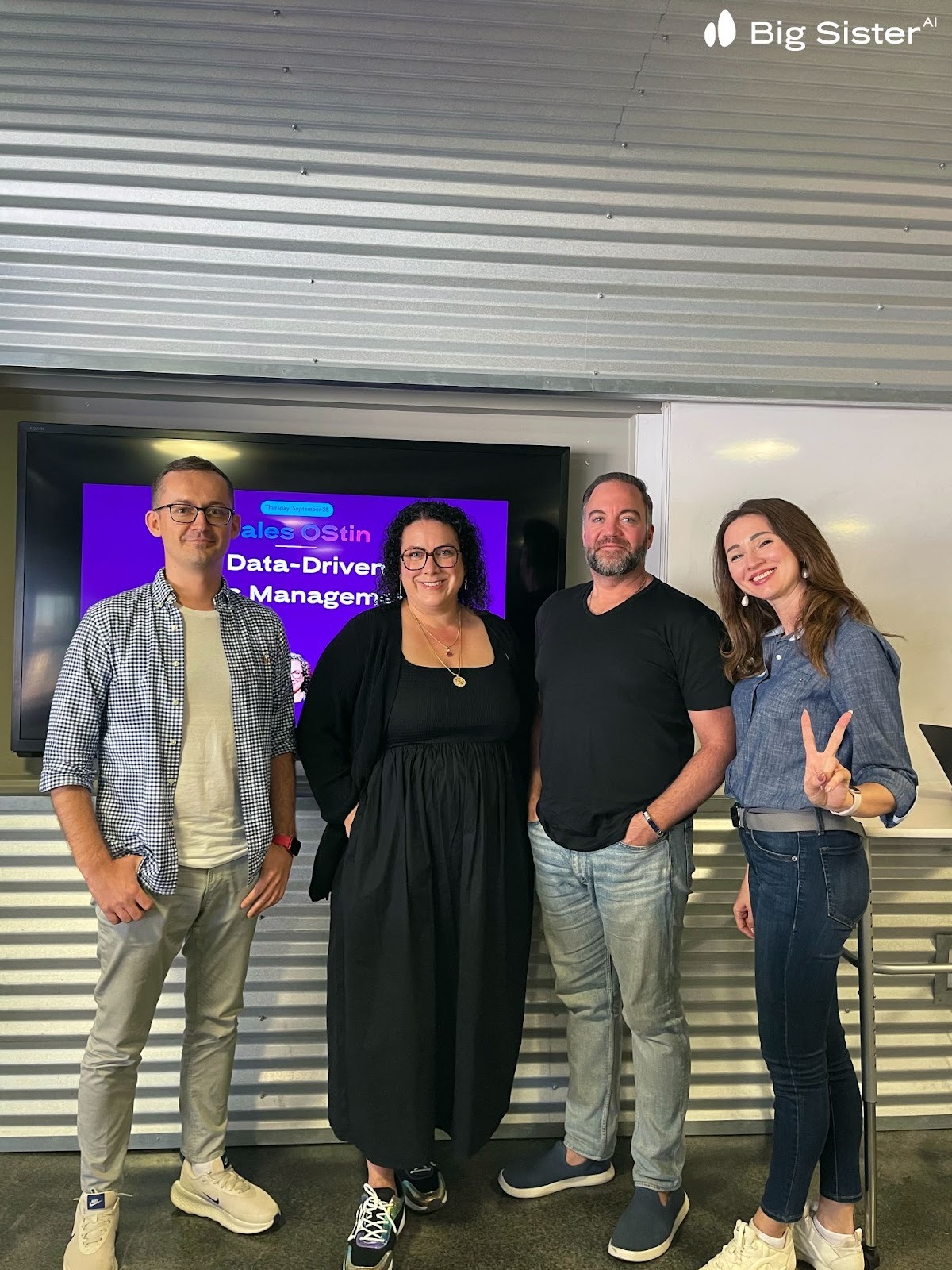
Entrepreneurs, CEOs, and sales leaders in the U.S. found powerful lessons rooted in the reality that, before embracing AI, managing quality data is essential. What follows is a useful breakdown of the actionable insights shared by the speakers, helping sales teams craft repeatable business models and scale intelligently.
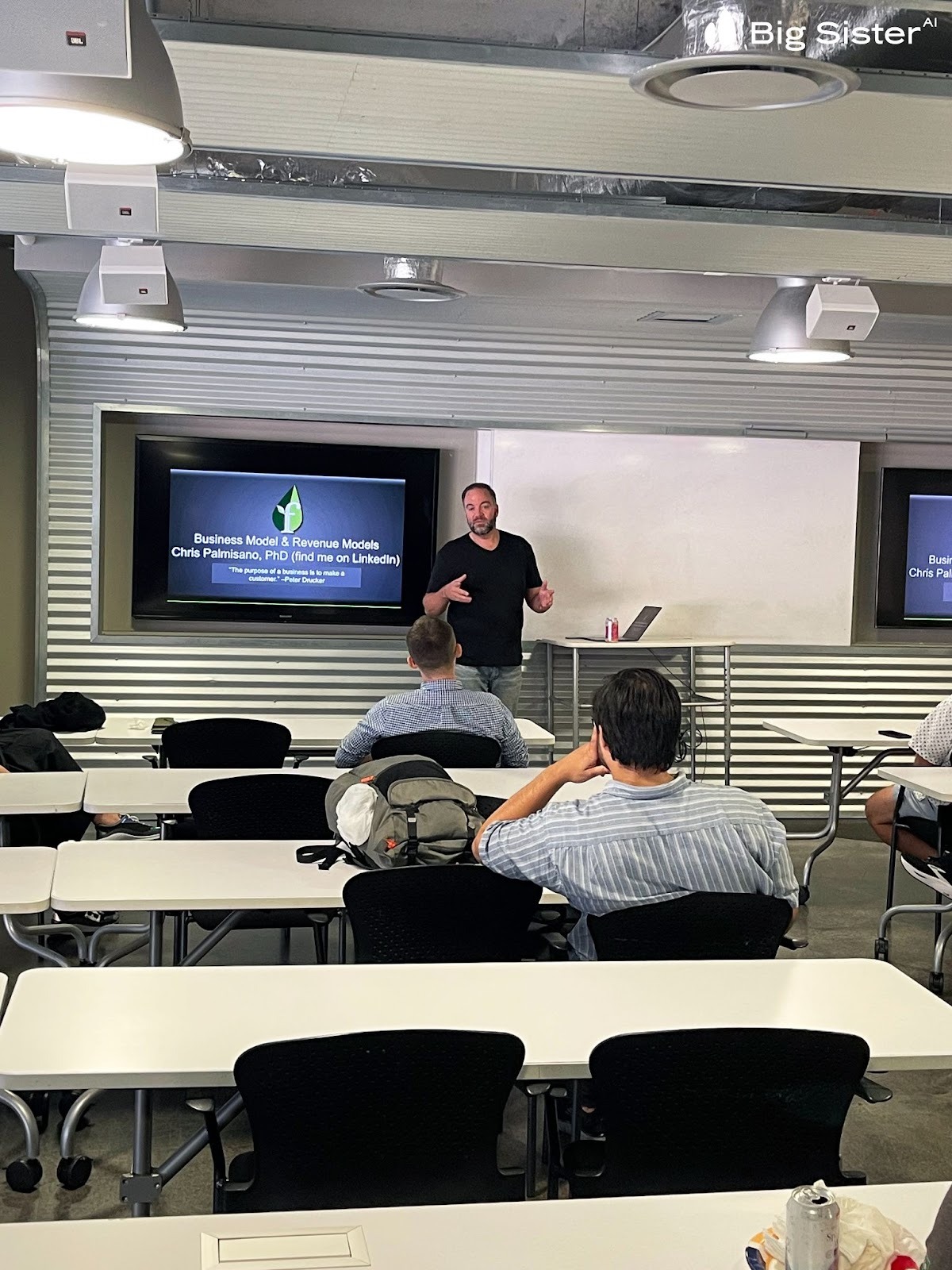
Early-Stage Sales Foundations: The Art and Science of Building Revenue Models
Speaker: Chris Palmisano, VCOO & Fractional C-Suite Executive
Chris Palmisano, with a rich background at Google, Microsoft, and Amazon, underscored a timeless truth inspired by Peter Drucker: “The purpose of a business is to make a customer.”
He emphasized that this fundamental focus is often lost in the early excitement around capital and growth metrics.
Practical explanation: Anchoring your revenue strategy on true customer creation, rather than vanity metrics or easy funding, builds a foundation for sustainable business success.
Chris described how early-stage startups, typically operating without internal data, must balance sales as both an art and a science, discovering scalable, repeatable revenue models through constant validation.
- Focus on Customer Creation: Success hinges on creating and retaining customers, not just chasing capital or growth. Sales efforts must zero in on real value creation.
He also advised, “I think about a value proposition as three things. Who am I helping? How am I helping them? And why do they care?”
Practical explanation: This communication blueprint helps startups craft clear, jargon-free value propositions that speak directly to customer needs.
- Build with Simple Frameworks: Tools like Lean Canvas and Jobs Theory allow quick hypothesis testing about market needs and positioning. For instance, appreciating a product’s “job to be done,” as illustrated by McDonald’s milkshakes, leads to sharper product-market fit.
- Early Founder-Led Sales: Founders selling directly to early customers validate demand effectively. Investors typically desire at least 10 unaffiliated paying users.
- Hire Sales Reps in Pairs: Hiring two reps simultaneously facilitates understanding if performance issues are systemic or individual
- Watch the “No Fly Zone”: Complex products paired with low prices yield poor economics that scaling alone won’t fix.
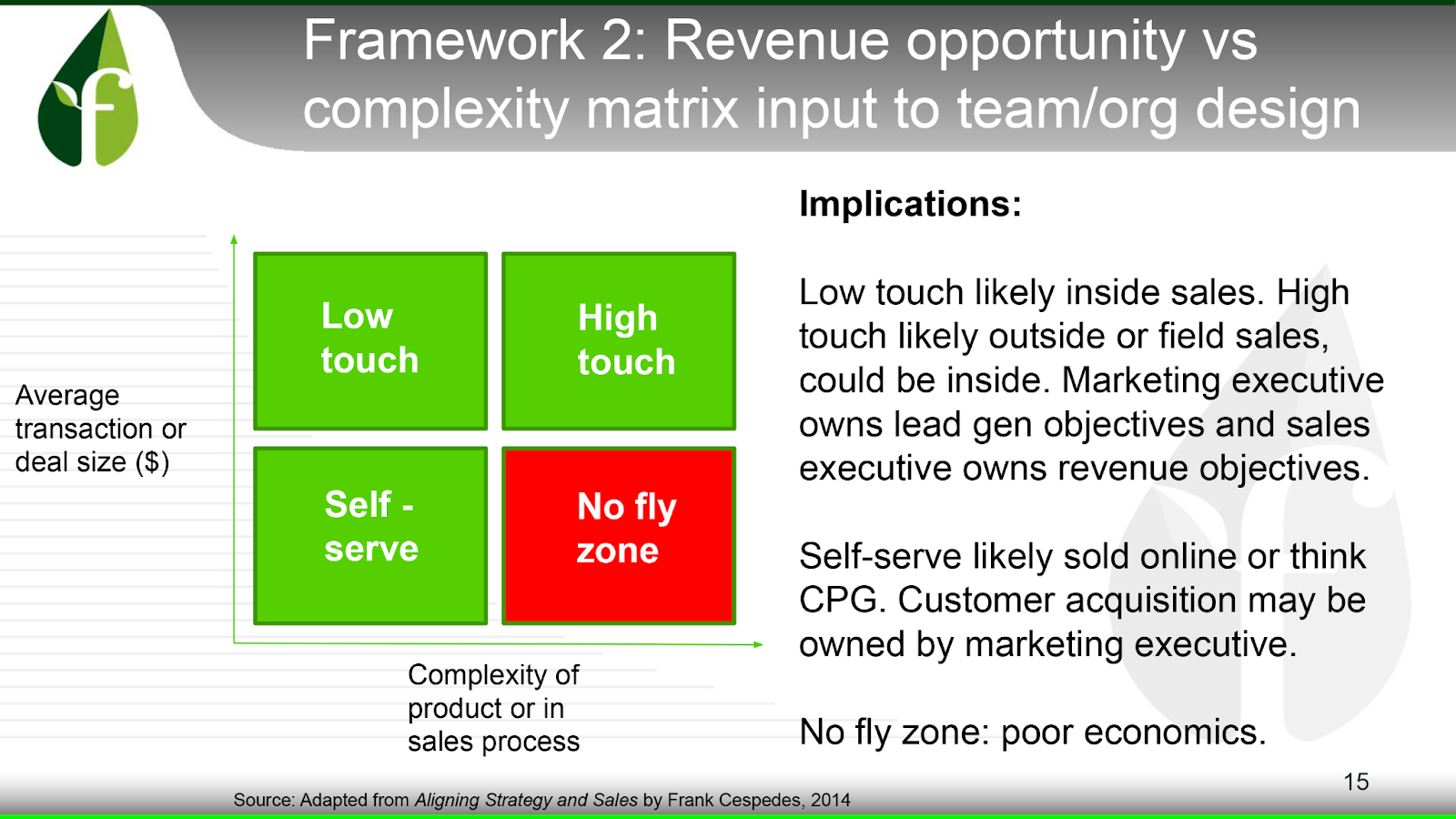
This framework shows how to match sales approaches with product complexity and deal size. It helps businesses decide how to structure their sales teams for maximum efficiency and revenue.
- Self-serve (low complexity, low deal size): Best handled online or through marketing automation. This minimizes cost and scales easily (e.g., SaaS freemium models, consumer goods).
- Low touch (higher deal size, low complexity): Works well with inside sales. The process is still efficient, but human interaction helps close deals.
- High touch (high deal size, high complexity): Requires field or enterprise sales. Direct relationship-building and tailored solutions justify higher costs.
- No fly zone (low deal size, high complexity): Poor economics; too expensive to sell compared to the revenue. These opportunities should be avoided or redesigned.
Practical benefit: This matrix helps leaders allocate resources effectively. It clarifies when marketing should drive acquisition, when sales should own relationships, and when a business should avoid certain opportunities entirely. Ultimately, it prevents wasted effort and improves sales ROI.
- Ethical Data Use: Transparency and responsible data handling build trust and long-term customer relationships.
- Value-Based Pricing: Price your product as a fraction of the client’s realized value to create “a beautiful business.”
Conclusion: Embracing customer value creation, ethical data handling, and sales as authentic relationships offers the best path to sustained growth.
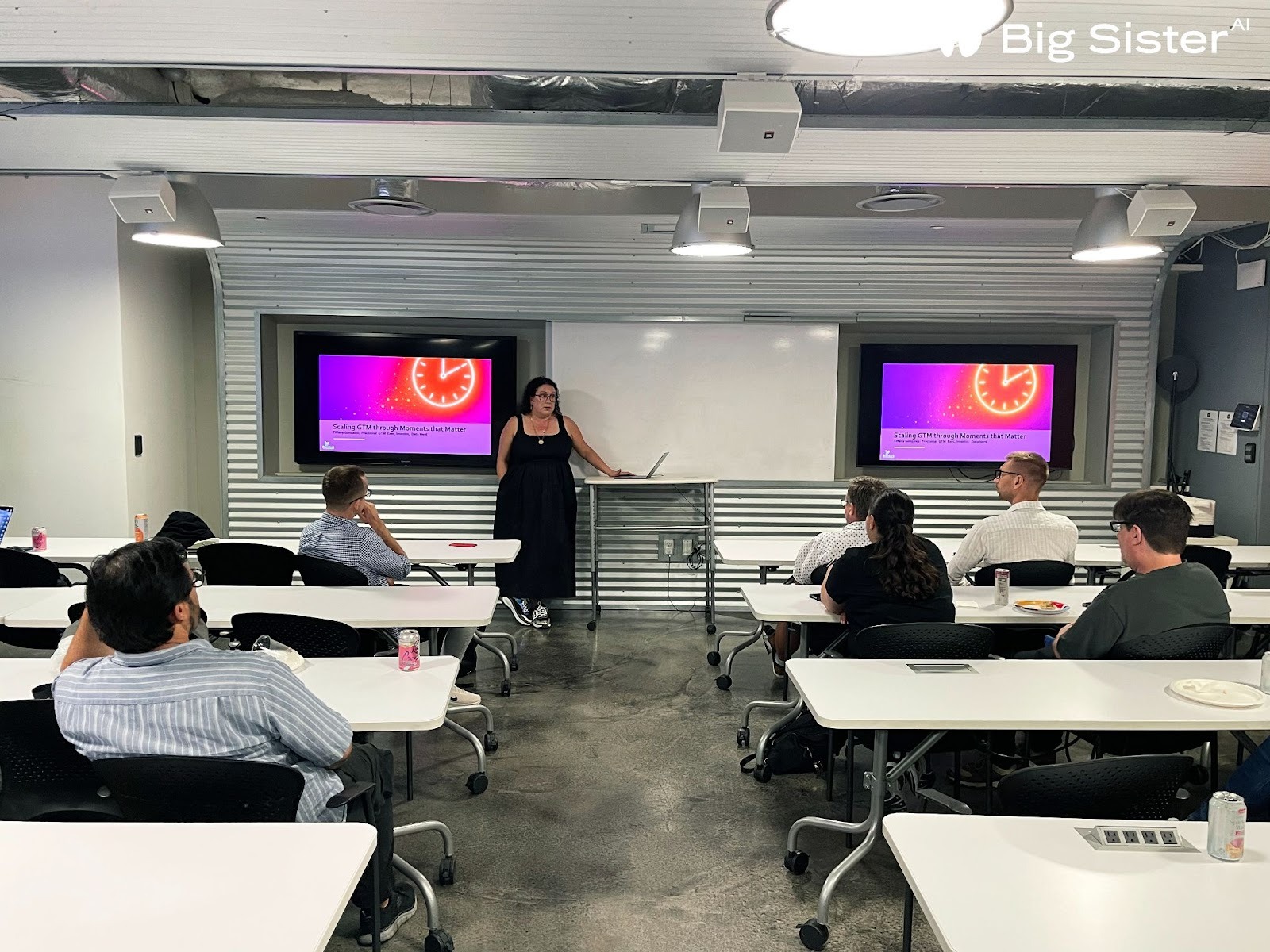
Scaling Go-to-Market (GTM) with Data and Customer-Centricity
Speaker: Tiffany Gonzalez, Fractional GTM Exec & Limited Partner at Stage 2 Capital
Tiffany Gonzalez focused on scaling businesses from millions to billions in revenue by owning and integrating the Go-to-Market (GTM) strategy.
Her message was clear: “If you’re the CEO of the company and you do not own GTM, you are failing your company.”
Practical explanation: CEOs must lead GTM strategy and integration to break down silos and protect the customer experience.
She defined GTM as a continuous, scalable process that aligns marketing, sales, and customer success teams to accelerate market entry while delivering a seamless customer journey.
- CEO Ownership of GTM: CEOs must champion strategic, organizational, and data aspects of GTM.
- Identify “Moments That Matter”: Leading Indicators of Retention (LIRs) serve as early signals that customers are receiving value, supporting retention and expansion.
- Navigate GTM Pitfalls: Recognizing “valleys of death” at stages like selling but failing to deliver or renewing without expansion helps leaders maintain momentum.
Tiffany’s practical advice: “Look at data that proves you’re wrong. It’s the fastest path to truth.”
Practical explanation: Challenging assumptions with data drives faster, more informed decisions and removes ego bias.
She also distinguished Ideal Customer Profile (ICP) from buyer personas, emphasizing precise narrowing of ICP for focused growth, and reminded that “sales is about relationships” built on trust and empathy, not tricks or pressure.
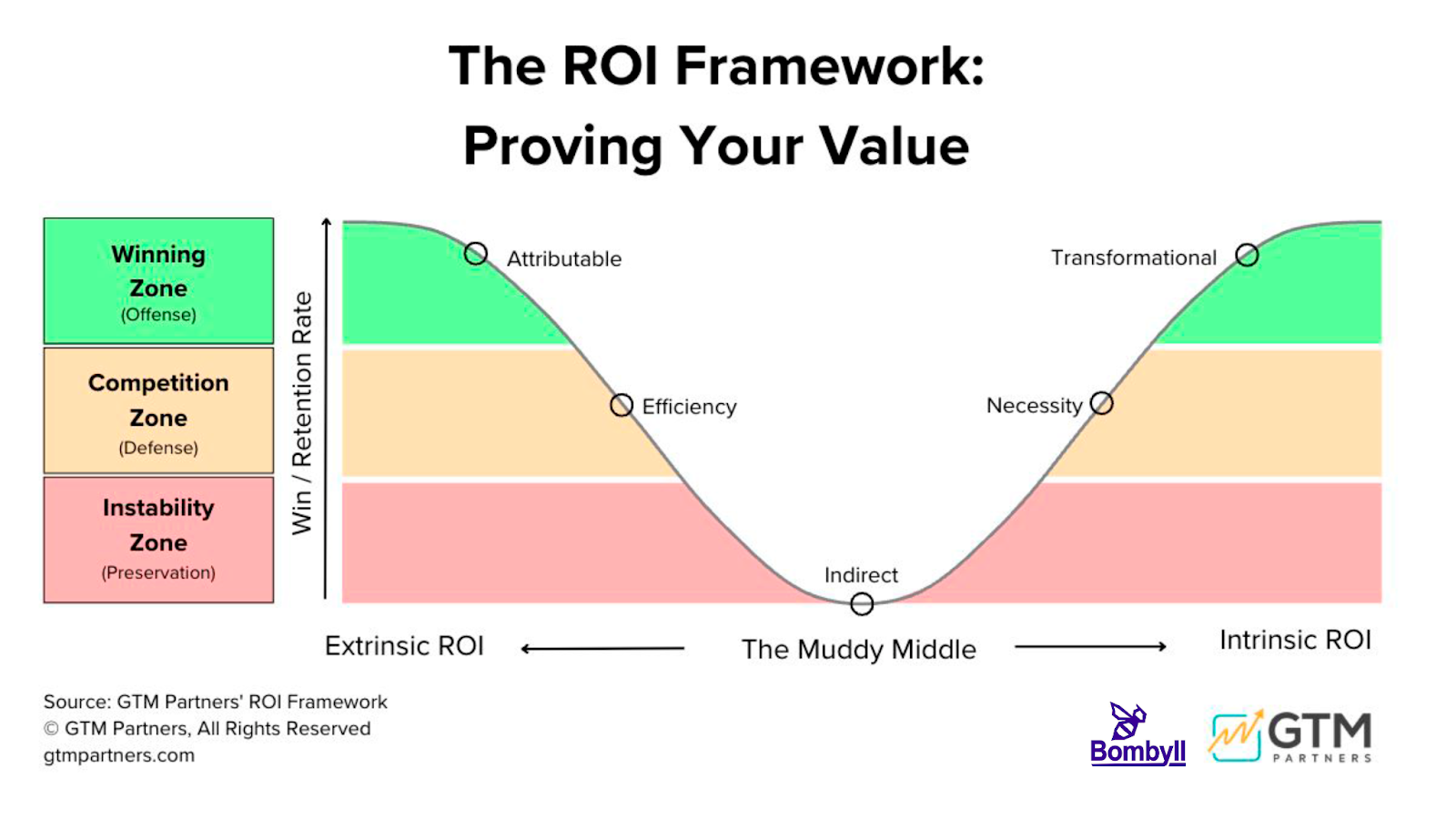
This slide presents The ROI Framework: Proving Your Value by GTM Partners, which helps businesses understand how to position and communicate the value of their solutions.
From a practical business perspective:
1. Three Zones of ROI:
- Winning Zone (Offense) – Solutions that clearly show measurable, attributable, or transformational ROI. These drive strong win rates and retention, putting you ahead of competitors.
- Competition Zone (Defense) – Solutions that provide efficiency or necessity value but are easier for competitors to claim as well. Here, the differentiation is weaker, so success often depends on pricing, brand, or relationships.
- Instability Zone (Preservation) – Solutions with mostly indirect ROI. They are harder to justify to buyers, leading to customer churn and low sales impact.
2. Extrinsic vs. Intrinsic ROI:
- Extrinsic ROI (left side) refers to easily measurable outcomes like cost savings or efficiency improvements. These are useful but often not unique.
- Intrinsic ROI (right side) focuses on deeper business transformation and necessity. These outcomes are harder to measure but much more defensible and long-lasting.
3. The Muddy Middle:
- Many businesses struggle here, where ROI is indirect and less compelling. Falling into this zone makes it difficult to win deals or retain customers.
Practical takeaway for businesses: To maximize growth and retention, companies must move their value proposition into the Winning Zone — by quantifying clear, attributable ROI and positioning their offering as transformational rather than just “nice to have.”
This means developing strong proof points, customer stories, and metrics that highlight not only cost savings but also business impact, competitive advantage, and long-term necessity.
Conclusion: CEOs and sales leaders who fully own their Go-to-Market strategy ensure their companies can scale smoothly by closely connecting internal teams, anticipating customer needs through data, and continuously refining engagement at critical moments. This disciplined, customer-focused approach powers sustainable growth and predictable revenue.
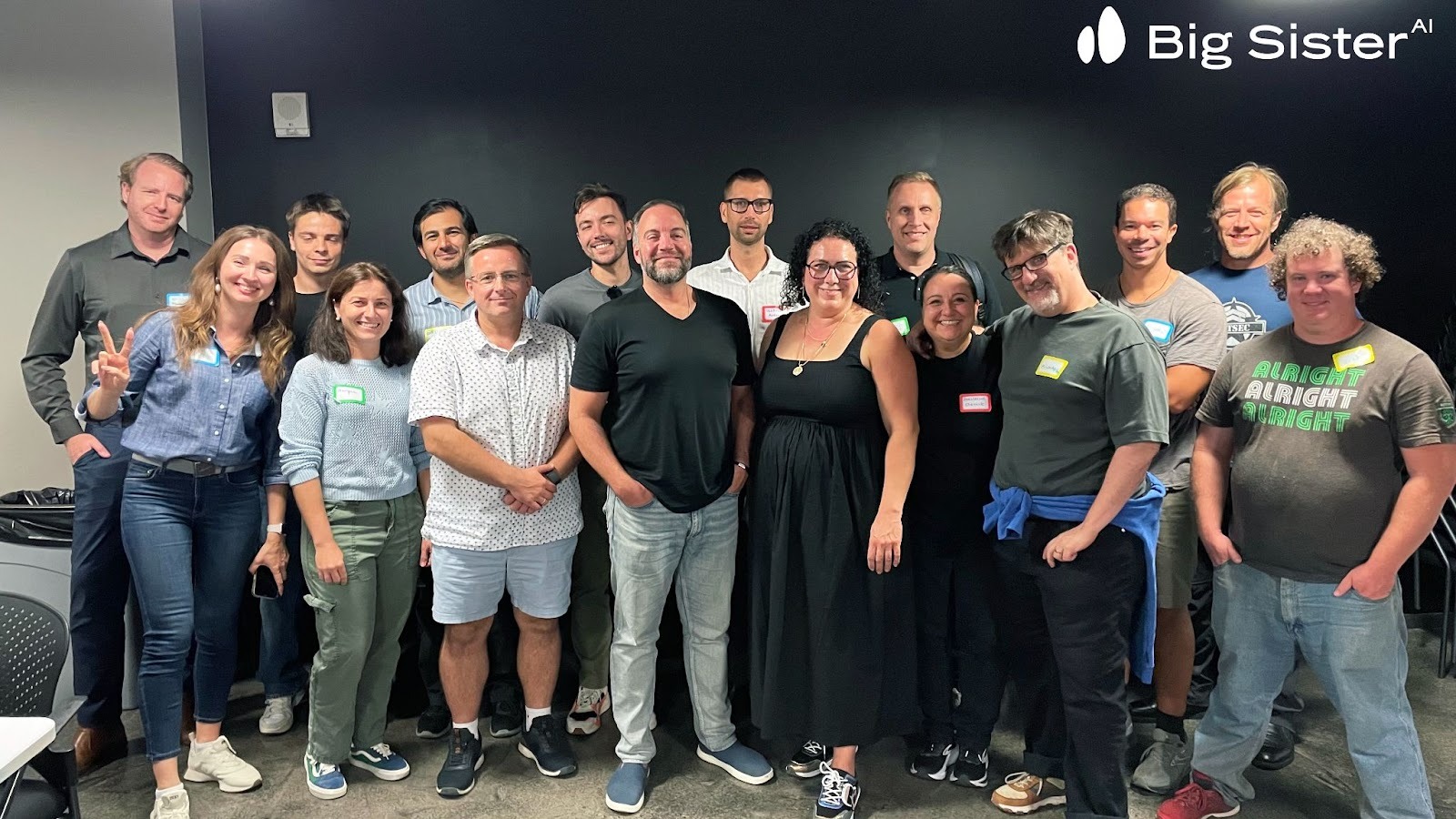
Conclusion: Sales Success Starts with Data and Ends with Relationships
The Sales OStin event delivered a thoughtful roadmap for sales excellence from early-stage hustle to scale. Across all talks, the consensus was clear: mastering data discipline and a CEO-led, integrated Go-to-Market strategy are essential foundations before leveraging AI or other tech. We are looking forward to seeing everyone at our next event, "Sales OStin. From Startup to Successful Exit", in October.
Meanwhile, catch some of the best insights in our short highlight video: Watch here.










